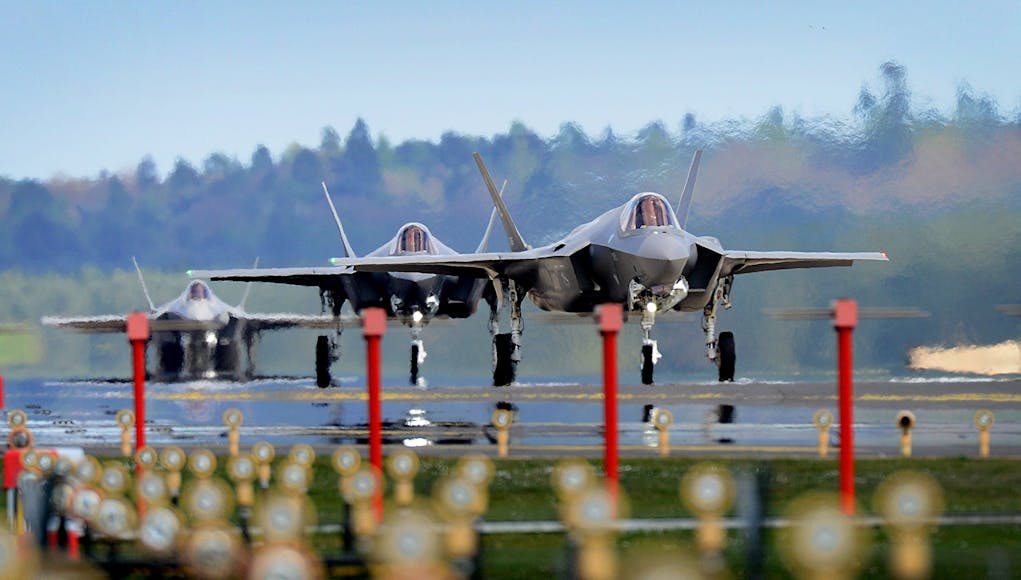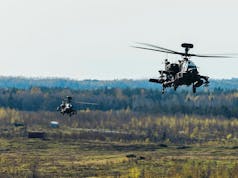The US Air Force has temporarily grounded a squadron of F-35A jets at Luke Air Force Base because five pilots have reported symptoms of hypoxia.
The F-35A is the conventional takeoff and landing variant intended for the US Air Force and other air forces. It is the smallest, lightest F-35 version and is the only variant equipped with an internal cannon, the GAU-22/A.
Oxygen deprivation is known as hypoxia. In all five cases the back-up oxygen system was engaged and the single-seat planes landed safely.
Brig. Gen. Brook Leonard, 56th Fighter Wing commander said:
“The Air Force takes these physiological incidents seriously, and our focus is on the safety and well-being of our pilots. We are taking the necessary steps to find the root cause of these incidents.”
US Air Force spokesman Capt Mark Graff said in a statement:
“The 56th Fighter Wing at Luke Air Force Base, Arizona, canceled local flying operations today for F-35A Lightning II aircraft due to a series of five incidents in which pilots have experienced hypoxia-like symptoms.”
The full statement from the US Air Force reads:
“The 56th Fighter Wing at Luke Air Force Base, Arizona, cancelled local flying operations today for F-35A Lightning II aircraft due to a series of five incidents in which pilots have experienced hypoxia-like symptoms.
According to base officials five F-35A pilots assigned to Luke AFB have reported physiological incidents while flying. In each case, the aircraft’s backup oxygen system operated as designed and the pilot followed the correct procedures, landing the aircraft safely.
Wing officials will educate US and international pilots today on the situation and increase their awareness of hypoxia symptoms. Pilots will also be briefed on all the incidents that have occurred and the successful actions taken by the pilots to safely recover their aircraft. Flight medicine will brief physiological symptoms and also the extensive measures that are being taken to analyze data collected from the incidents. Finally, the 56th Operations Group will hold an open forum to discuss any concerns pilots may have given these recent occurrences.
Currently, the local flying operations cancellation is limited to Luke AFB.”
The US Air Force said the incidents first began on the 2nd of May. A Lockheed representative said “our team stands ready to help in any way possible to address this issue.”
On the 2nd of August 2016, the US Air Force declared the F-35A basic combat ready.
Eight F-35 Lightning aircraft from the United States Air Force along with supporting units and equipment recently completed the first F-35A training deployment to Europe.
While at Royal Air Force Lakenheath, the squadron flew 76 sorties and tallied more than 154 flying hours alongside F-15s from the 48th Fighter Wing.
Lt. Col. Jason Zumwalt, the 493rd Fighter Squadron commander said:
“This exercise provided our pilots with the opportunity to practice working together to solve complex tactical scenarios using integrated operations that optimised both the F-35 and F-15’s capabilities. We found that by working together, we can achieve a higher level of performance than either aircraft can achieve alone.
During the training deployment, the aircraft forward deployed to Estonia and Bulgaria to maximise training opportunities, build partnerships with allied air forces and familiarise Airmen with Europe’s broad and diverse operating conditions.
This deployment was a great opportunity for the 34th (FS) and the 48th (FW) to practice 4th and 5th generation fighter integration tactics. It was an honour to host the 34th (FS) at RAF Lakenheath, where we were able to integrate our operations in a shared workspace.”
RAF Lakenheath is scheduled to receive its first permanent F-35A Lightning IIs in 2021.














If I remember correctly, the F-22 also had a problem with pilots suffering from hypoxia a few years ago.
i think it still does they couldn’t find the cause so just decided to keep flying and hope for the best – hope the same problem isn’t in the f-35 as with the number of it supposed to be produced someone is bound to crash
Indeed, as does the Hornet & Super Hornets.